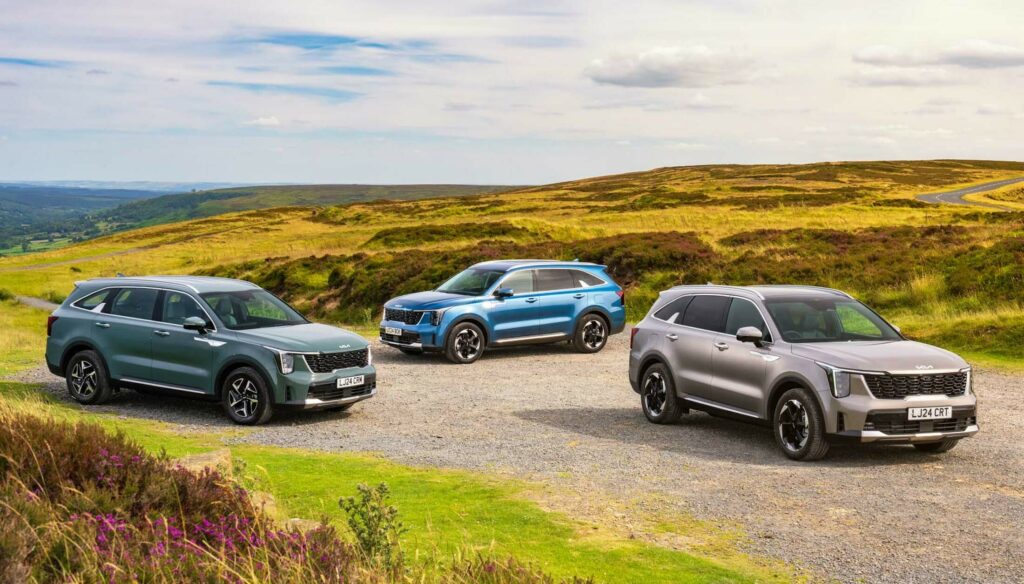Roomy, well-equipped seven-seat Korean SUV now features a face and interior borrowed from the brand’s similarly-sized electric SUV
1 hour ago
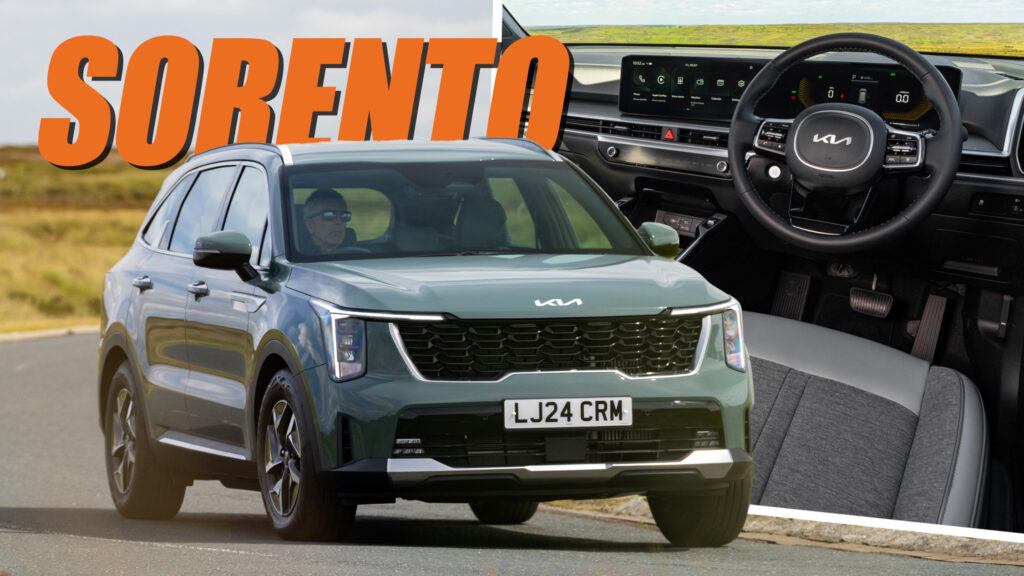
Kia’s EV9 caused a big splash when it arrived last year and with good reason. It looks great and is the only electric SUV with three rows of seats from a mainstream car brand. But it’s still not very affordable and not everyone wants an EV. Enter the 2025 Sorento, which costs about two thirds as much as an EV9 and, freshly facelifted, now features a similar face and interior.
What’s new?
At heart, this new Sorento is the same fourth-generation SUV launched four years ago, but the EV9-influenced makeover helps inject some premium-style glamour and square-jawed confidence. All of the front-end sheetmetal and plastics are new, but it’s the wishbone-shaped DRLs and vertically-stacked LED headlights that have the biggest impact, and create the clearest link to the latest design language seen on the brand’s big electric SUV, and soon the smaller EV5 and EV3.
Quick facts
Related: 2024 Kia Sorento Puts On A Bold New Face, Which Is Backed Up By A Classier Cabin
This is only a facelift though, so the rest of the body is largely untouched, with only small updates to the bumper and Mustang-esque rear lights to signify the new model when viewed from the back. There are no mechanical changes, either, but inside, it’s a different story.
Dashboard upgrade
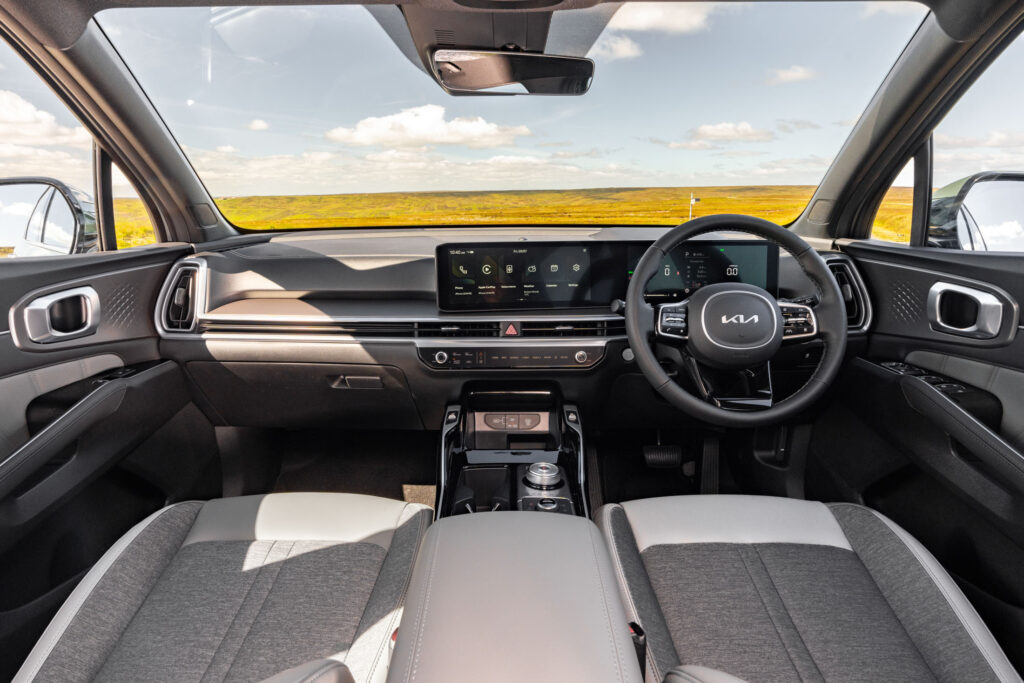
The EV9 influence is again apparent the moment you open the door. Instead of the old Sorento’s very separate instrument pack and gauge cluster, one curving piece of glass now covers both. It looks fantastic, and the interface is both attractive and responsive, but from a purely practical point of view it’s a shame the handy hard keys on either side of the old car’s screen have had to go to tidy up the design.
Also tidied up is the climate control deck, which will look familiar to anyone who’s got up close to an EV6’s driver’s seat. The touch sensitive buttons are prettier though less useful than old-style buttons, but at least you still get rotary dials for temperature. Overall it’s much cleaner and more modern looking than last year’s console, and far less gray than the boring interiors of UK-market EV9s.
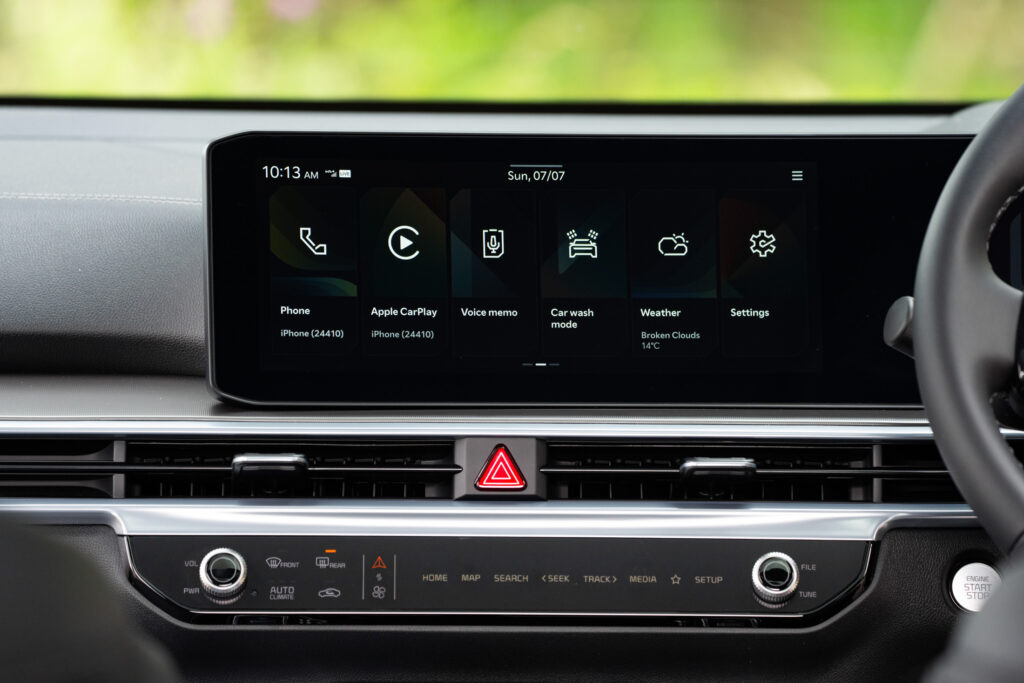
The rest of the cabin is mostly unchanged and that’s okay. The rotary gear selector – a feature many of you love to hate – is easy to use because there’s no way to overshoot Drive or Reverse, the quality of the materials is almost premium-grade, and there is heaps of space by European standards. The second row legroom is generous and adults can fit in the third row, too, though the high floor and small windows mean you wouldn’t want to be back there for hours.
Erecting those last seats does dramatically reduce the size of the normally vast cargo bay, though in seven-seat mode it still offers more luggage space than some rivals. Americans who don’t want to choose between chairs and trunk space can always upgrade to the bugger Telluride, but that SUV isn’t available in Europe.
Two hybrids, one diesel,
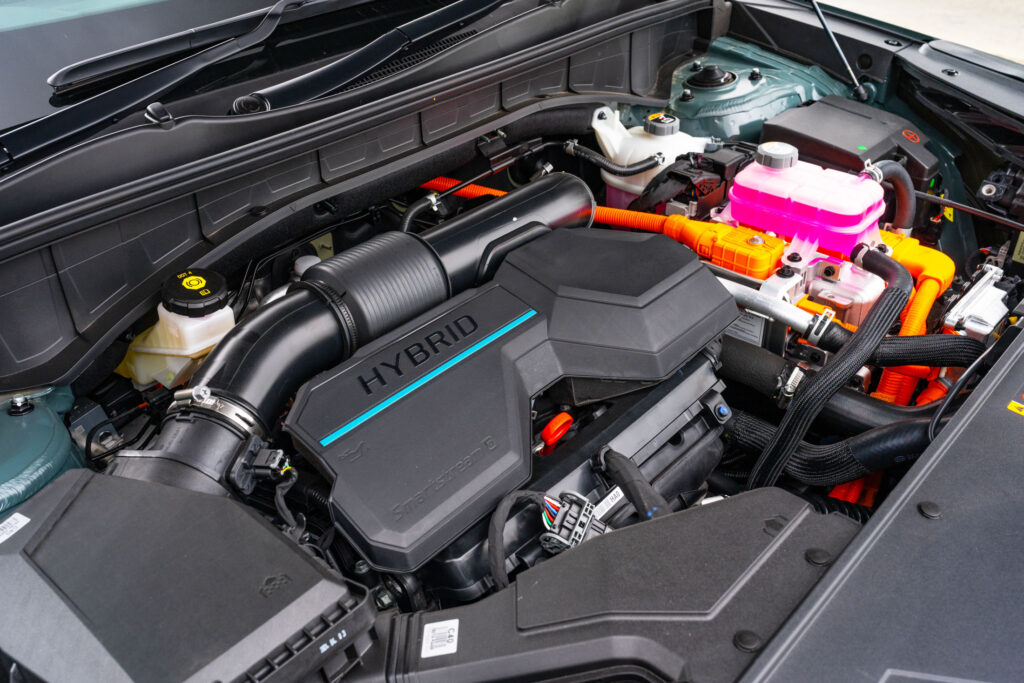
Euro Sorentos comes with a choice of three powertrains, each sharing its power between all four wheels and carried over unchanged from the pre-facelift models. Brits largely prefer the non-pluggable HEV hybrid, which makes 212 hp (215 PS) and takes 9.7 seconds to hit 62 mph (100 kmh). That’s not quick, but then the PHEV is no ball of fire, either. It only makes 248 hp (250 PS) and still needs 8.8 seconds to reach 62 mph.
You can feel the plug-in’s extra urgency over the plain hybrid, and the tax benefits to business users of running a plug-in will easily wipe out the £4,300 premium over the HEV in the UK, but its 34-mile (55 km) electric range looks poor in a market where PHEVs now offer twice as much from a charge and are much faster.
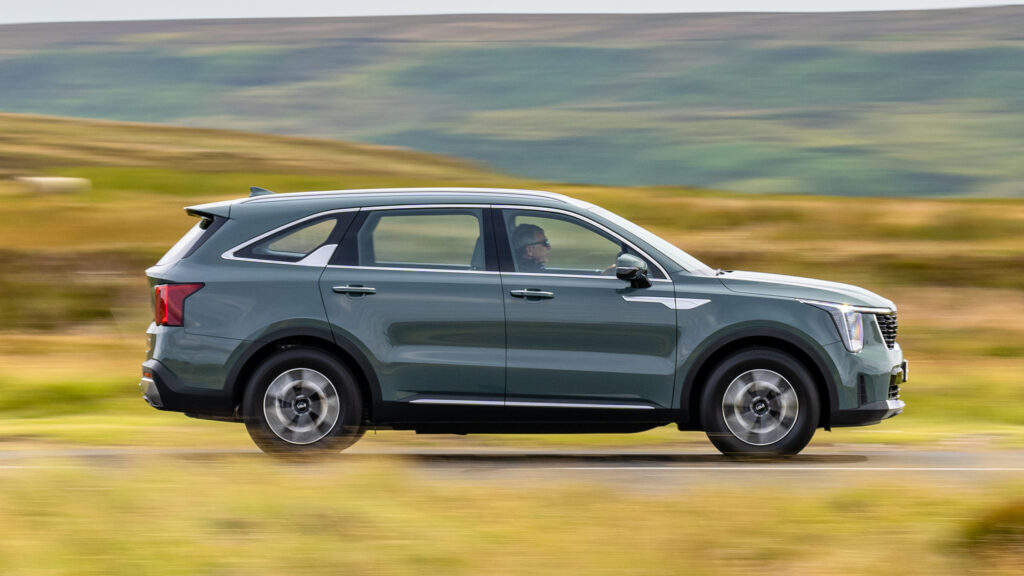
And though refinement is obviously great when cruising in EV mode, and the switch from electric to combustion power is handled slickly, the 1.6-liter ICE motor itself isn’t the smoothest in either hybrid when worked hard. Smoother than the 190 hp (193 PS) 2.2-liter diesel, mind. Yes, diesel sales are falling, but there are still enough people in Europe who tow and can’t bear to visit fuel stations more than once every 500 miles (805 km) for Kia to justify keeping diesels on the books.
Though you won’t forget it’s a diesel until you’re cruising at 70 mph (113 kmh), combustion clatter isn’t bad by diesel standards and the torque (325 lb ft / 440 Nm) available means it’s going to feel less lethargic when fully laden than the petrols, even if the un-loaded 9.7-second zero to 62 mph time doesn’t reflect that.
Built for comfort, not for carving
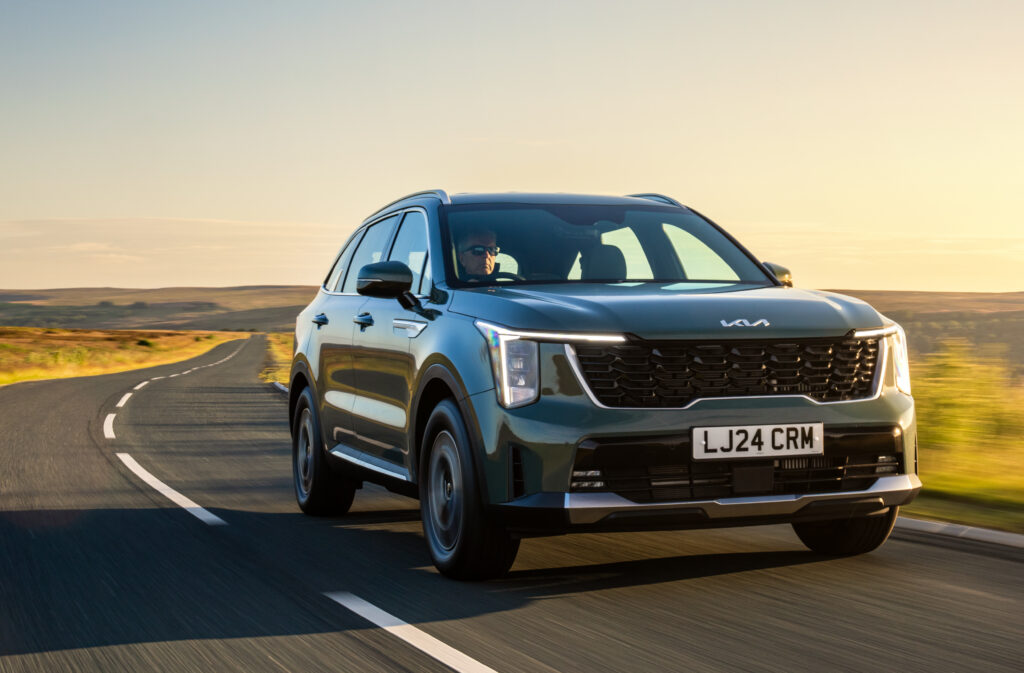
Like driving fast? You’ll like BMW’s X5 more than the Sorento – but so you should considering one of those costs half as much again. The Kia is stable and capable, and doesn’t collapse into a sloppy mess when you crank up the pace, but it’s never entertaining in the way the BMW is. We doubt few buyers will feel like they’re missing out, however, and the good news is that Kia hasn’t ruined the ride comfort in a misguided attempt to deliver sports car handling. The Sorento rides bumps well, particularly when equipped with the base car’s 17-inch wheels, which somehow manage not to look completely lost in the arches.
Specs: from luxurious to palatial
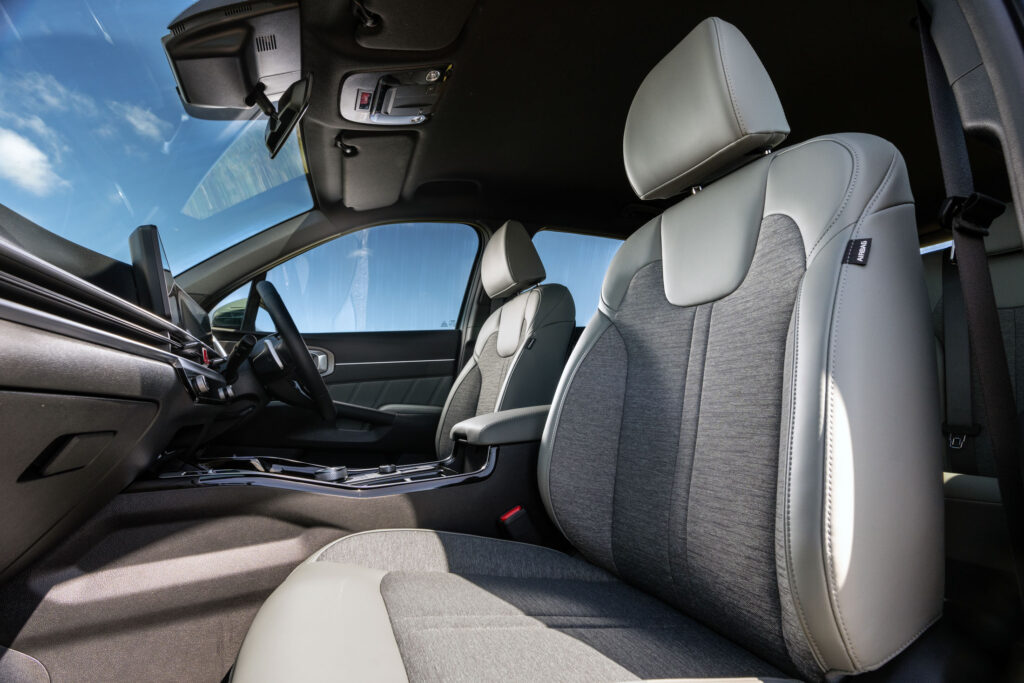
Here’s another reason to love the entry level 2-spec car over the more luxurious trims: its cloth seat trim looks bang on-trend and surprisingly luxurious. UK Sorento trims have reverted to the simple 2, 3 and 4 format and all are well equipped. Even the 2 comes with heated seats and wheel, rear air conditioning, and wireless Apple CarPlay and Android Auto.
Stepping up to 3 grade brings 19-inch alloys, electrically-adjustable leather seats, a 12.3-inch driver display screen, wireless phone charger and more safety gizmos. Want more? Sorento 4 has fancy Nappa leather, massage seats, a 12-speaker Bose hifi and fingerprint recognition for individual driver profiles.
Verdict
The Sorento has always majored on bang for buck, and nothing has changed about that. You might argue that Kia could have changed more about the Sorento, improving the performance or the plug-in driving range. All it’s really done is given the SUV a new face and new dashboard. But those theoretically superficial upgrades really ramp up the desirability and feelgood factor without spoiling all the sensible things the Sorento does so well. The EV9 might be Kia’s car of the moment, but the Sorento is still doing a great job in the background, and for a whole lot less money.
